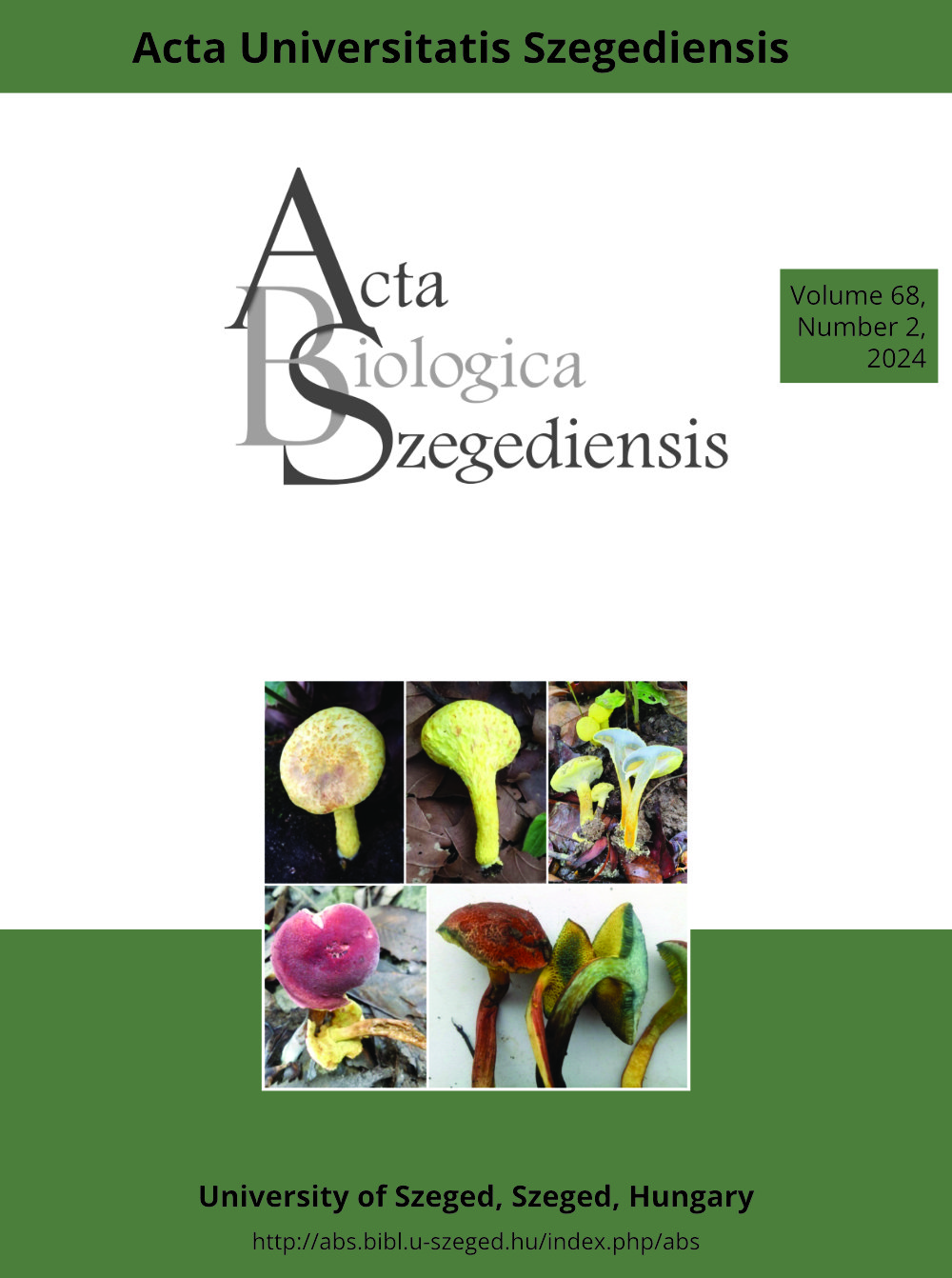Evaluation of the effect of organic soil amendments and irrigation regimes on the quantitative aspects of fatty acids in camelina seeds
DOI:
https://doi.org/10.14232/abs.2024.2.115-123Keywords:
linoleic acid, oleic acid, polyunsaturated fatty acids, qualitative characteristics, saturated fatty acidsAbstract
This study aimed to assess the impact of soil moisture regimes (FI: full irrigation throughout the growing season, DI: deficit irrigation at 60% of field capacity during vegetative growth) and farmyard manure (FYM) levels (F0: 0, F10: 10, and F20: 20 t ha-¹) on the fatty acid profile of oil extracted from camelina seeds in the Razan region, western Iran. The highest linolenic acid content was recorded under FI+F10 and DI+F10 conditions. The application of F10 under FI and DI increased linoleic acid content by 2% and 1.4%, respectively. Water deficit stress significantly reduced eicosadienoic acid content (by 0.95%). The highest eicosadienoic acid content was observed under FI+F20 conditions (14.53%). Soil amendments and irrigation improved oleic acid content by approximately 3%. The highest palmitic acid content (5.20%) was obtained with F10 and F20 under FI conditions. Erucic acid content decreased under both soil moisture regimes as FYM application increased. The highest saturated fatty acid content was recorded under FI+F20. Plants grown with F20 had the highest polyunsaturated fatty acid content (69%).
Downloads
References
Abdelmounaim K, Houria C, Abderrahmane H, Samir M, Yamina H, Rekik F, Asma M, Cheli R, Ghougali F (2024) Effects of deficit irrigation on the composition of by-products of camelina sativa: towards sustainable water use in semi-arid agriculture. Sustain Dev 14(1):22-34.
Banaś K, Piwowar A, Harasym J (2023) The potential of rapeseed (canola) oil nutritional benefits wide spreading via oleogelation. Food Biosci 56:103162.
Berti M, Gesch R, Eynck C, Anderson J, Cermak S (2016) Camelina uses, genetics, genomics, production, and management. Ind Crops Prod 94:690-710.
Bilska A, Kurasiak-Popowska D, Szablewski T, Radzimirska-Graczyk M, Stuper-Szablewska K (2024) Camelina sativaseeds and oil as ingredients in model muffins in order to enhance their health-promoting value. Foods 13(13):2027.
Blanco-Canqui H, Hergert GW, Nielsen R A (2015) Cattle manure application reduces soil compactibility and increases water retention after 71 years. Soil Sci Soc Am J 79(1):212-223.
Brummerloh A, Kuka K (2023) The effects of manure application and herbivore excreta on plant and soil properties of temperate grasslands-a review. Agronomy 13(12):3010.
Chew SC (2020) Cold-pressed rapeseed (Brassica napus) oil: Chemistry and functionality. Int Food Res 131:108997.
Galanty A, Grudzińska M, Paździora W, Paśko P (2023) Erucic acid-both sides of the story: a concise review on its beneficial and toxic properties. Molecules 28(4):1924.
Haghaninia M, Javanmard A, Kahrizi D, Bahadori MB, Machiani MA (2024) Optimizing oil quantity and quality of camelina (Camelina sativa L.) with integrative application of chemical, nano and bio-fertilizers under supplementary irrigation and rainfed condition. Plant Stress 11:10 0 374 .
Hazrati S, Zaker K, Habibzadeh F, Sadeghi Bakhtevari AR (2022) Effect of simultaneous application of biochar and vermicompost on the growth and grain yield of camelina (Camelina sativa) oil plant under rainfed condition in East Azerbaijan province.J Plant Pro Fun 11(51):77-92.
Janmohammadi M, Amanzadeh T, Sabaghnia N, Ion V (2016) Effect of nano-silicon foliar application on safflower growth under organic and inorganic fertilizer regimes. Bot Lith 22(1):53-64.
Naorem A, Jayaraman S, Dang YP, Dalal RC, Sinha NK, Rao CS, Patra AK (2023) Soil constraints in an arid environment-challenges, prospects, and implications. Agronomy 13(1):220.
Neupane D, Lohaus RH, Solomon JK, Cushman JC (2022) Realizing the potential of Camelina sativa as a bioenergy crop for a changing global climate. Plants 11(6):772.
Panjoo M, Nazarian-Firouzabadi F, Ismaili A, Ahmadi H (2014) Evaluation of genetic diversity among soybean (Glycine max) genotypes, using ISJ and R APD molecular markers. J Plant Physiol Breed 4(2):55-65.
Pajura R (2023) Composting municipal solid waste and animal manure in response to the current fertilizer crisis-a recent review. Sci Total Environ 912:169221.
Pasandi M, Janmohammadi M, Abasi A, Sabaghnia N (2018) Oil characteristics of safflower seeds under different nutrient and moisture management. Nova Biotechnol Chim 17(1):86 -94 .
Rodríguez-Rodríguez MF, Salas JJ, Garcés R, Martínez-Force E (2014) Acyl-ACP thioesterases from Camelina sativa: cloning, enzymatic characterization and implica-tion in seed oil fatty acid composition. Phytochemistry 10 7:7-15.
Rodríguez-Rodríguez MF, Sánchez-García A, Salas JJ, Garcés R, Martínez-Force E (2013) Characterization of the morphological changes and fatty acid profile of develop-ing Camelina sativa seeds. Ind Crops Prod 50:673-679.
Savchenko T, Walley JW, Chehab EW, Xiao Y, Kaspi R, Pye K (2010) Arachidonic acid: an evolutionarily conserved signaling molecule modulates plant stress signaling networks. Plant Cell 22(10):3193-3205.
Yuan L, Li R (2020) Metabolic engineering a model oilseed Camelina sativa for the sustainable production of high-value designed oils. Front Plant Sci 11:11-20.








